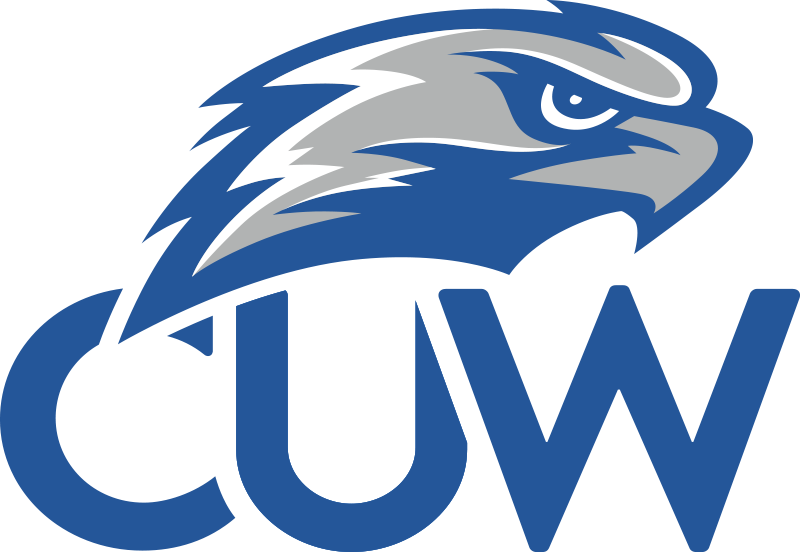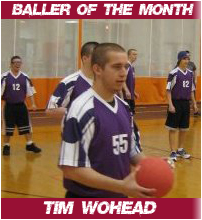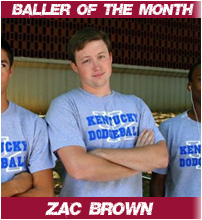On Sunday, Nov. 15, this league accomplished something I wasn’t sure it was capable of doing.
Facing a mid-season crisis regarding Nationals (only our biggest and most important tournament of the entire year), we didn’t panic. We remained calm and formulated a plan to fix a very serious problem.
Two schools, SVSU and BGSU, stepped forward as potential hosts. I called for a vote to decide who would get the Nationals bid.
I doubted (as did many others, I’m sure) that a ragtag group of college students could organize itself enough to put out a fire like the inferno we were facing.
Sunday came, the votes rolled in, and the door to my skepticism was slammed shut.
12 teams emailed me their vote on Sunday. Eight of them voted for BGSU, making the “Dodging Falcons” the host for Nationals in 2010. That was that.
More than anything, our league’s ability to mobilize and solve a national crisis (literally) proved to me that we have enormous potential for growth.
I’m not just talking about a handful of new teams in the next couple years. That would be nice, of course, but my sights are set a lot higher than that.
I’m talking about the type of exposure that will garner consideration for games on an ESPN network. The type of recognition that will have video game companies taking notice (because everyone knows an NCDA video game would own).
I know what you’re thinking – “Josh, we’ve been down this road before. The league is still too young to accomplish those types of goals.”
Very good point, Mr. Fictional Critic. I’m not arguing that.
What I want to do is accelerate the growth of this league and transform those goals from pipe dream into an achievable reality.
It can happen. It will happen. And I’m going to tell you how.
I’ve been sitting on this list for a while, but after Sunday, I think this league is finally ready to step up and help legitimize itself.
Ladies and gentlemen, for your consideration, I present the “Five Steps to Help the NCDA Go Big.”
1. Film every game and put it on YouTube
Think for a second about the NFL, NBA, NHL or MLB. Think about the fond memories you have from any of those sports. Do the majority of those memories involve stories, pictures or podcast recaps of your favorite games? I didn’t think so.
What you most likely remember are the games you watched in person or on television. You can recall in detail the moments that defined your sports fandom because you watched it unfold. The NCDA is missing out on that element of popular sports. We aren’t seeing the games that matter, going crazy after the big headshots or memorizing the performances that transcend the game.
We can’t get our games on TV (yet), but YouTube provides a great alternative for watching teams pummel each other all season long. I know we have some teams that routinely post their games on YouTube, but that’s not enough. We need every team to provide footage.
Take it from someone who knows – setting up a camera, paying someone to film the game and uploading that footage to the internet is insanely easy. The guy who filmed WKU’s game against UK got 10 bucks. It took me about two hours to edit the footage and post it. That’s it! There’s no reason we shouldn’t have footage from every game. So, my challenge to every team is to stop making excuses and get those games on YouTube.
2. Mandate uniforms for every team, including shorts
What ensures that you don’t look out of place at a job interview? Sunday school? A swimming pool? I’ll give you a second…that’s right, the appropriate attire. If you showed up to a job interview in jeans and a T shirt, you would continue to remain unemployed and embarrass yourself at the same time.
As a league, we’ve done a decent job thus far of dressing to impress. Most teams have jerseys and those that don’t at least have some type of team shirts. But if we want to go big, “decent” isn’t going to cut it anymore. We need uniforms for every team in the NCDA. That means not only matching jerseys, but shorts, too.
“But Josh, my team is new and we don’t have the money for uniforms.”
Bullcrap. Money should never be an obstacle for a team when it’s trying to get uniforms. Even if by some chance your team can’t get a dime of funding from the school (highly unlikely since most schools throw money at clubs), you’re telling me each of your members doesn’t have 14 bucks? That’s right, each member of your team can buy jerseys and shorts for as low as $14. Don’t believe me? Check this website:http://www.epicsports.com/. I just found 20 jerseys and 20 pairs of shorts for $269.59, including shipping. That’s exactly $13.48 a person. If your members can’t afford that, then we’ve got much bigger issues going on then playing dodgeball.
Not only are they cheap, but uniforms for every team will instantly make the league more legitimate. I can’t tell you how many times I’ve heard, “You guys have jerseys and everything!” from our fans. Uniforms work wonders. If your team doesn’t have them already, I strongly suggest they look into it.
3. Elect a board of representatives that can be efficient in decision making
I know we’ve got the captains, but one thing this Sunday illustrated was the need for a decision-making council in the NCDA. Not just one with fancy titles and special privileges, but one that could mobilize quickly and pass decisions without prolonged delay.
Even if it were just the captains who comprised the board (my suggestion), that group needs to nominate officers to help the proceedings run smoothly. The positions I recommended in my 5 Year Plan were President, Vice President and Secretary. Basically, I think we need a face for this league (president) and someone to assist them or fill in when the president is absent (vice president). We also need someone to keep records of our voting and decisions (secretary). Another important position would be head recruiter, or the person who received all the inquiries from new schools about starting a team.
Electing captains to these positions wouldn’t be difficult. We could do it at the Nationals meeting this season. We could do before then in another email vote. Whenever we do it, the important thing is that we get it done quickly. Having leaders at the forefront of the league, guiding its progress, is too important to do without.
4. Create season awards and have players vote on the winner
Who doesn’t like to be rewarded for their work? I know I do. So do athletes. The major sports leagues have awards for everything – most valuable player, best comeback player, best rookie, etc. In dodgeball, we have the potential for so many awards it’s not even funny. Let me demonstrate:
Most valuable player, killer of the year, best hands, most hated player, toughest out, best blocker, fastest arm and play of the year – I could keep this up all day. The point is that we need to start recognizing our best players for their accomplishments. This wouldn’t be tough to do.
First off, we’d need footage of each game so the league could see other teams in action. Before Nationals, we accept nominations for each major award. Then we let the people vote. Whether this happens at Nationals on a paper ballot or online through a poll question on the website, the end result would be the same. Players would get recognition, bragging rights would be established and rivalries would become more interesting. After all, who wouldn’t want to see the match-up between the NCDA’s fastest arm and its best set of hands?
5. Designate rivalry games and broadcast those games live on the website
Nothing gets a sports fan more heated than a rivalry. Ask any Yankees/Red Sox, Lakers/Celtics or Colts/Patriots fan what happens when their favorite team suits up against their sworn enemies. It’s what sports is all about.
As a league, we’ve seen the beginnings of great rivalries, but we must take an active approach to fostering those games and promoting them everywhere we can. That means coming up with games that have cool names. Right now, the only two games like that the NCDA has are the “Battle of the Valleys” and the “Battle of the Bluegrass.” I might be missing a couple, but even if I am, we still need more. I don’t want 5 rivalry games. I don’t even want 10. I want 20, 30 or hell, maybe even 40.
It’s a simple fact the rivalries mean bad blood, closer games and more intense action on both sides of the court. Teams don’t just want to win rivalry games; they want to destroy the other team. Flatten them. Make them wish they’d never been born. Pick your cliché because they all work here.
That means each team needs to figure out which teams they hate. I don’t mean hating individuals players on that team, but teams they want to beat the cat piss out of (to borrow a phrase from Mr. Zac Newton). To give you an example, we here at WKU are rivals with UK and UofL. Every time we play them, we want to stomp them into the ground. I love the guys on their team, but that doesn’t stop us from wanting to smash them once the game starts. To use a Bill Simmons term, teams need to have “sports hate” for their rivals, meaning you don’t actually hate them in real life, just when you see them on the dodgeball court.
The time for high fives and hugs is over. I want some bloodshed. I want some carnage. I want teams that are gunning for their opponents on every point. I want rivalries. Captains, let’s make this happen.
There you have it. I’ve racked my brain, and those are the five biggest things that I think can legitimize the NCDA in a jiffy.
It may not get us on ESPN right away, but if we implement these steps, it won’t be long before the Worldwide Leader starts calling.
Guess that means we’ll need new phones, too.


























 In the latest episode of the soon-to-be-renamed NCDA Alumni Podcast, the Aluminati discuss the Michigan Dodgeball Cup, Nationals 2014, and dodgeball outside the NCDA. Big questions are raised – Will Nationals ever get too big? Do the results of the MDC affect your view of the favorites heading into Nationals? – and everyone revels in the chance to make fun of McCarthy’s black eye.
In the latest episode of the soon-to-be-renamed NCDA Alumni Podcast, the Aluminati discuss the Michigan Dodgeball Cup, Nationals 2014, and dodgeball outside the NCDA. Big questions are raised – Will Nationals ever get too big? Do the results of the MDC affect your view of the favorites heading into Nationals? – and everyone revels in the chance to make fun of McCarthy’s black eye.
 Chad Schlundt – MBI #00
Chad Schlundt – MBI #00 Jeremy Dugans – EMU #20
Jeremy Dugans – EMU #20 Tim Wohead – WIU #55
Tim Wohead – WIU #55 Zac Brown – UK
Zac Brown – UK Austin Marshall – UofL
Austin Marshall – UofL